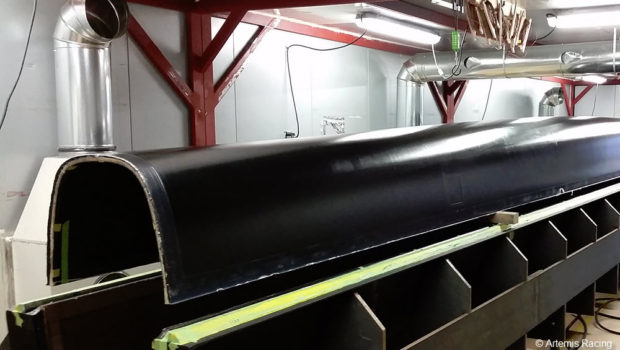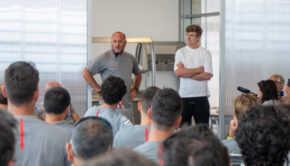This America’s Cup Will Be Different
Published on June 5th, 2016
That moment of truth for an America’s Cup team has always come months before the start of the first race. In truth, it comes much earlier as the first hires shape the team, but no moment has been more tangible than when the designers stop designing and the builders start building.
The anticipation of when the new boat is revealed is part of America’s Cup lore. While each team starts with the same design guidelines, what their brightest minds create begins the period of assessment that continues until that first race. What people see, or think they see, fuels the intrigue of the America’s Cup.
But when teams reveal their 15-meter America’s Cup Class boats to be sailed in anger next year, it will be more about the colors and branding than the innovative design details. As Swedish challenger Artemis Racing reports, these boats will all look the same.
“We’ve been in Sweden to build the hulls and bows of our America’s Cup Class Yacht, because under the America’s Cup Protocol, the challenging teams need to build at least the bow portion, approximately 3m long, in their country of origin,” reports Artemis Racing’s Brandon Linton. “The hull is one design, meaning every team will have exactly the same shaped hull. Although there are a couple of areas that you are allowed to play with, to the average spectator, the boats will look exactly the same.”
Since the hulls are, or should be, riding in the air above the foils, it is not the shape that matters but the construction. As all challengers are restricted to building just one race yacht each, and are not allowed to launch until 150 days before the start of the America’s Cup Challenger Series in May 2017, they have one chance to get it right, and not much time to make revisions.
“Everything has to be precise, there are lots of control measures that we put in place. The materials we’re using are very temperature sensitive, if you do not take care when you’re using these materials, you can have catastrophic failures, meaning ending up with a part that will be unusable. You’ve just got to make sure it is built correctly, to the plan specified, and make sure that you don’t make a mistake along the way.”








 We’ll keep your information safe.
We’ll keep your information safe.